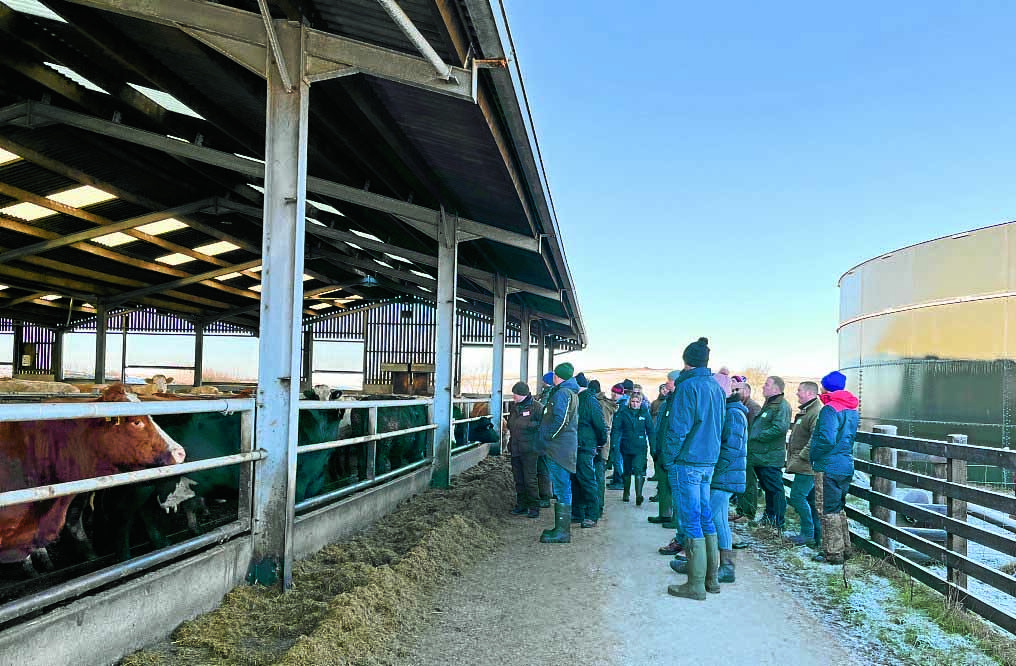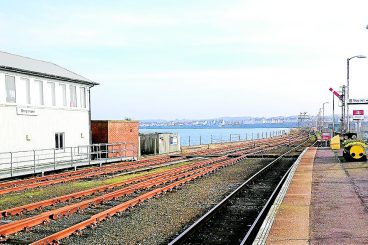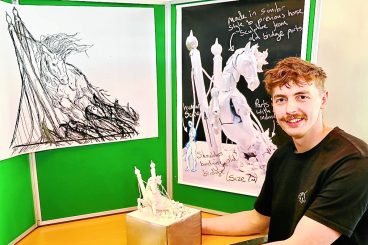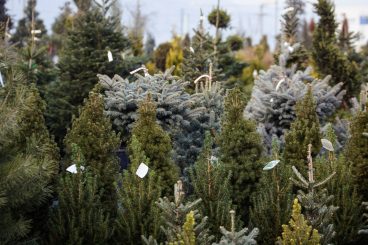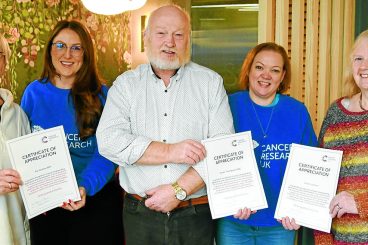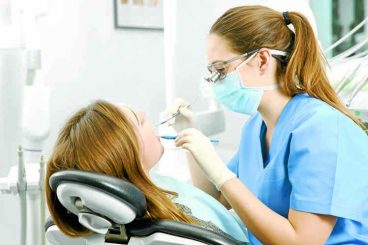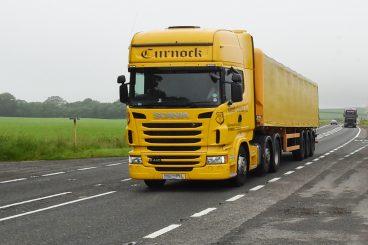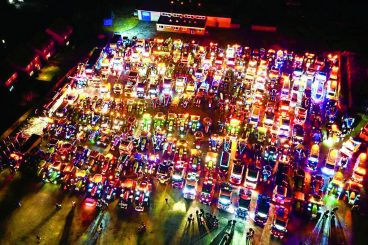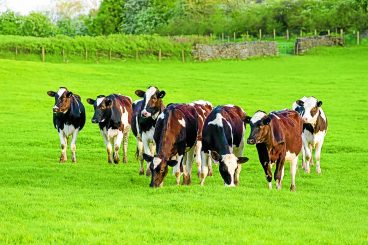MAKING better use of data collected on-farm to help drive business decisions, alongside some other potential changes, could provide key benefits for the beef and sheep enterprises at the new Dumfries Monitor Farm.
More than 60 farmers, advisers and industry reps were introduced to the new Dumfriesshire Monitor Farm, at Barnbackle, Lochfoot.
It is a 500-acre beef and sheep farm run by Richard McCornick and his partner Hayley, alongside Richard’s parents, Andrew and Janice. |Brother Craig and his wife Michelle also farm, and the two brothers help each other as and when needed.
The family runs 150 spring- and autumn-calving Sim-Luing suckler cows, 20 store cattle, and 700 Texel x Mule ewes at Barnbackle. Most calves are sold as sucklers with only a small number kept through winter, and lambs are sold off grass. Richard also runs a small herd of pedigree Charolais cattle, supplying local farmers with bulls to meet their requirements. Some of the cattle are out-wintered on kale, as are the sheep who also have access to swedes.
The event was hosted by Richard and Craig, supported by QMS and AHDB.
A highlight was Craig’s discussion about the farm’s data collection system. A handheld attachment for a mobile phone, it collects a wide variety of data but this is not always used in decision-making. This sparked discussion about the potential to focus on utilising the data in future.
There was also a strong emphasis on soil health, with the farming business wanting to gain a deeper understanding of the farm’s soil types and structures, and to look at whether there is more opportunity for rotational grazing and growing different crops.
Richard said: “The environment and soil is a big part of farming. If we don’t look after it, we won’t be able to grow crops or rear livestock. It’s one of the best investments to be made for a greater return in the future.”
Attendees discussed potential changes and improvements for the cattle enterprise, such as using shed space for diversification opportunities, changing the balance between autumn and spring calving in favour of springtime, and running more stock outside.
Monitor Farm visitors also discussed possibilities for the sheep enterprise, such as lambing outside, recording more data and reducing ewe size.
Richard’s main aim of being a Monitor Farm is to find ways to develop the business, making it more profitable and sustainable: “I’d like to reduce inputs such as fertiliser and feeds and make the most of what I’ve got,” he said.
A number of attendees volunteered to be part of the management group, which will discuss these possibilities and set meeting topics for the year.
Barnbackle is also working with two other Monitor Farms in the South of Scotland cluster – at Roxburghshire and in East Lothian. Maura Wilson is their regional advisor and said: “The Monitor Farm project is a great opportunity for farm businesses to join the management group and provide their own data, information, and ideas which will lead to change and better resilience for the monitor farmer and themselves. Individuals can also join the wider community group to keep in touch with the project and receive event invites.”
Richard added: “We all seem so busy working these days that we don’t get to see the neighbours and farming communities much. By opening our doors I’m hoping that the local network will get stronger.
“I’m looking forward to new developing skills through the programme and having a driving force that makes me get my head into the figures and makes me more confident in my decision-making ability.”
* For more details, see www.monitorfarms.co.uk or email [email protected]





